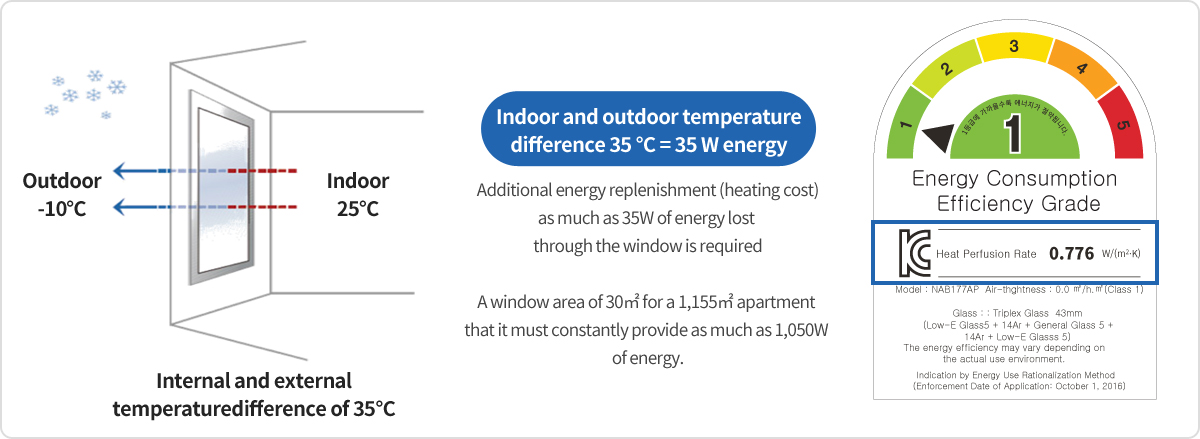Energy Protecting Window
If you understand the term "heat perfusion rate" correctly, you will see savings.

In winter, we wear thick clothes. This is because it is more effective in maintaining body temperature than thin clothes. The heat perfusion rate is an indicator of the speed at which the room heat is lost through the window, measured by the test and expressed numerically. To put this in a new way, as shown in the current grading system, is a numerical representation of the amount of energy needed to replenish the heat escaping through a particular object.
If it is marked as 1.0W/m2·K°C on the rating table, it means as follows. When 1㎡ of windows are installed and the temperature difference between indoor and outdoor is 1°C, 1.0W of energy is withdrawn from the room, which means that 1.0W of energy must be continuously replenished to maintain indoor temperature.
For example, if the inside temperature is 25°C and the outside temperature is -10°C in midwinter, the temperature difference between the inside and outside is 35°C, which means that 35.0W of energy must be continuously supplied to the inside to maintain the temperature at 25°C. This means that if the window area is 1㎡ and the window area of 1155㎡ apartment is 30㎡, it will need to continue to provide as much energy as 1,050W.
In conclusion, in order to minimize energy consumption, a window with a low thermal perfusion rate must be selected and installed.

Homepack use materials below 0.776W/m2/K°C
so they are excellent system windows that can protect the energy leaking out of our windows.

